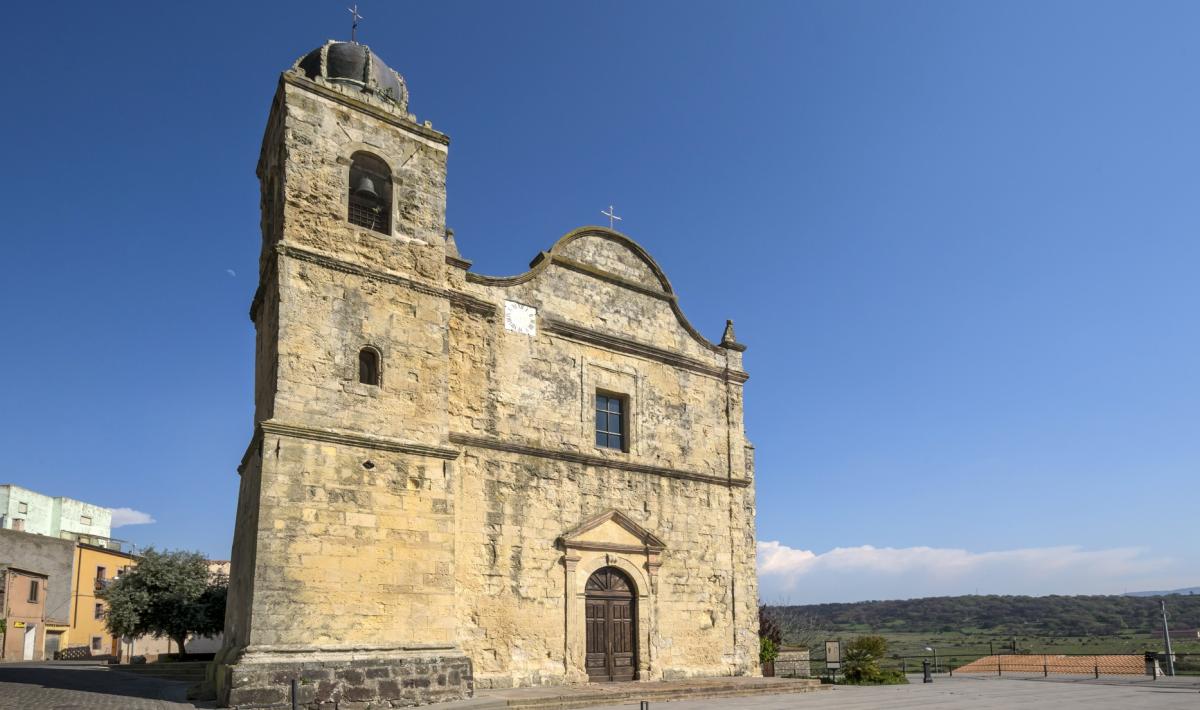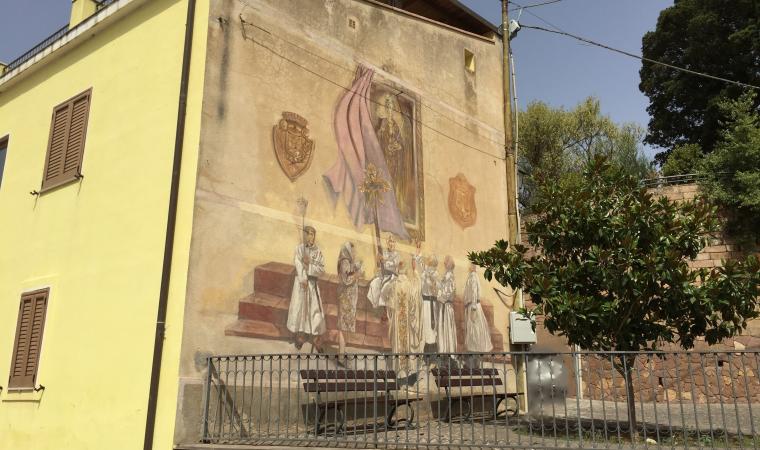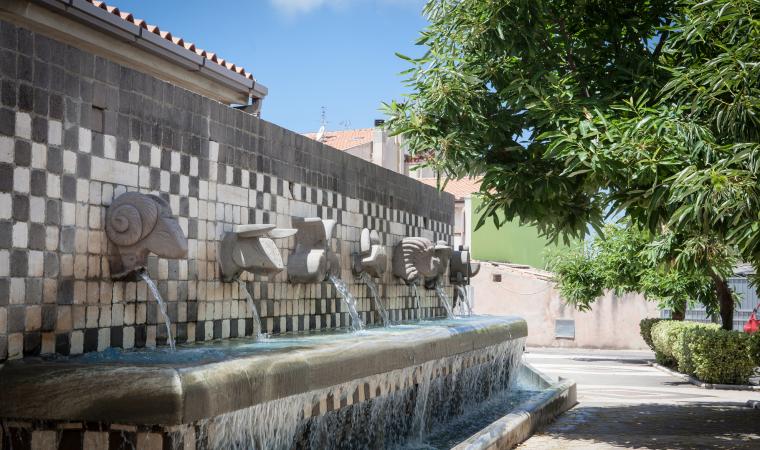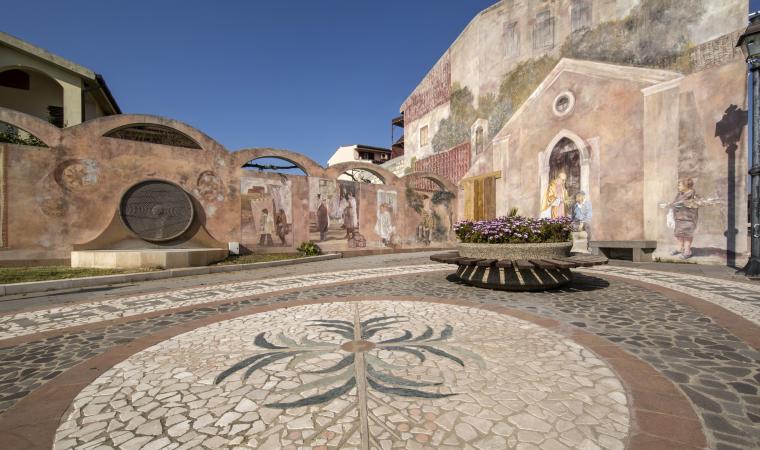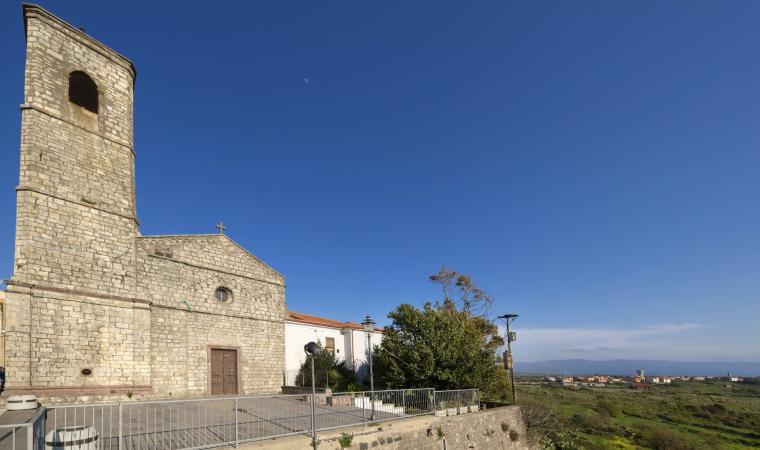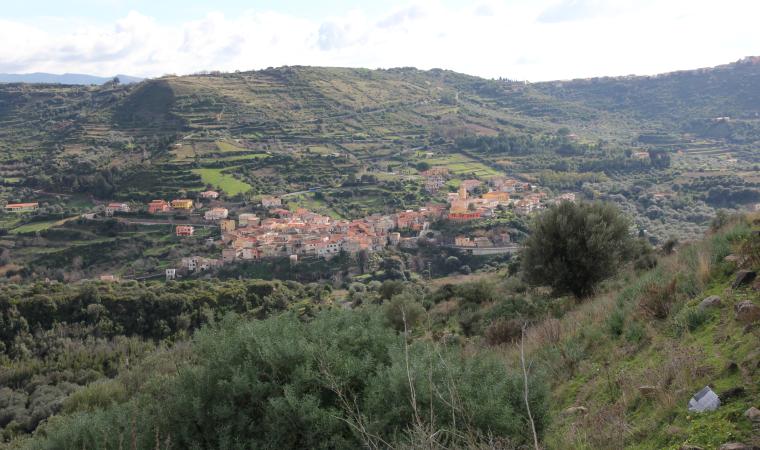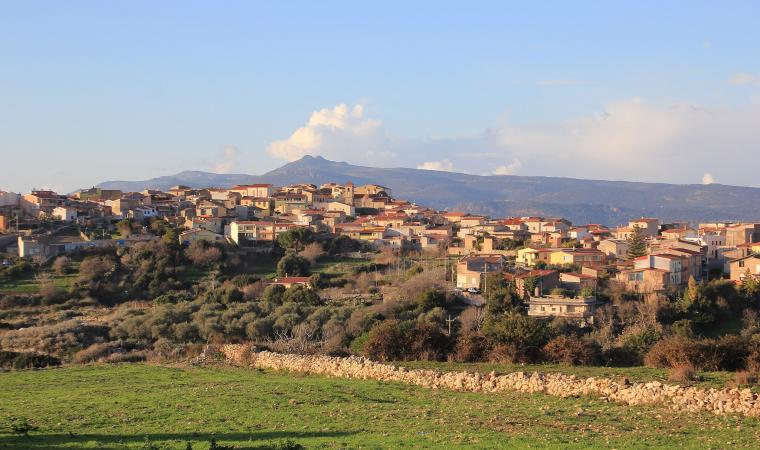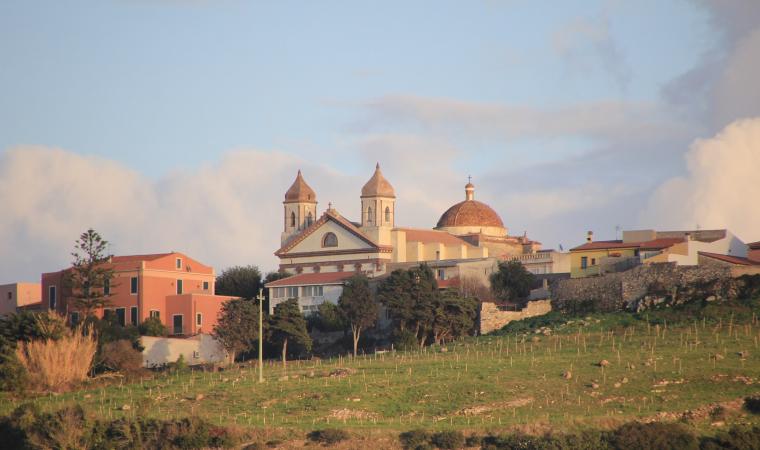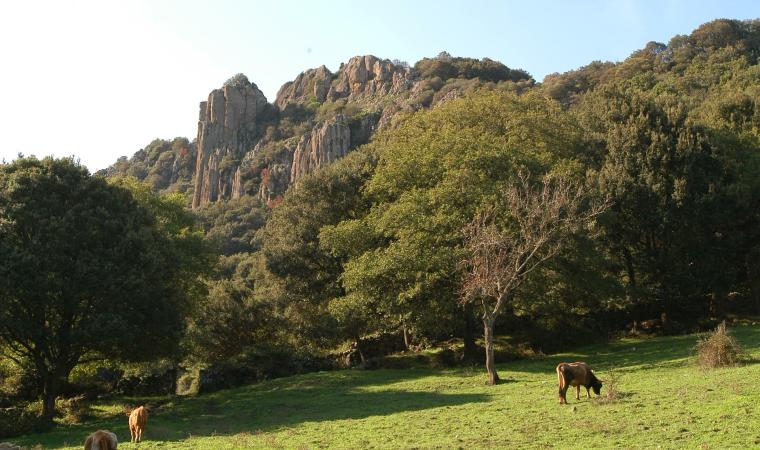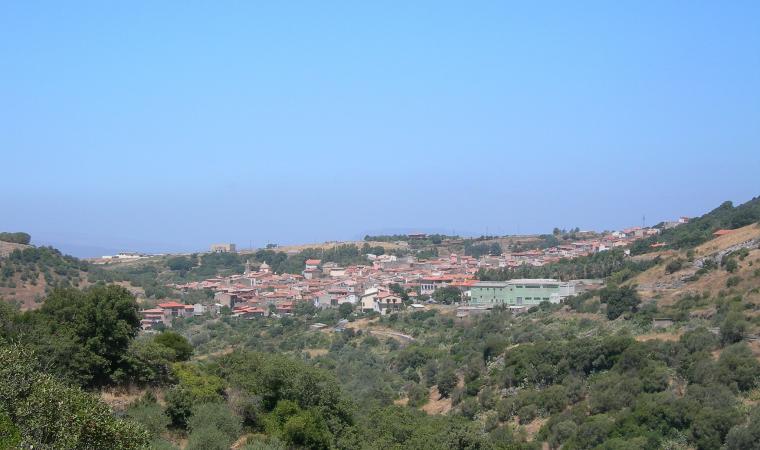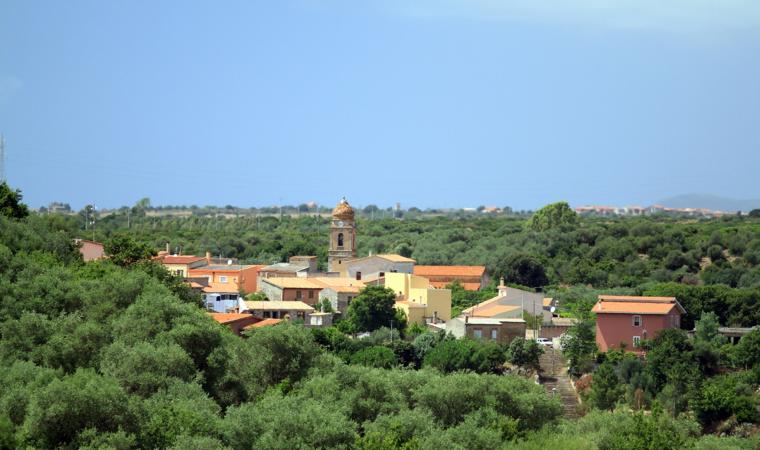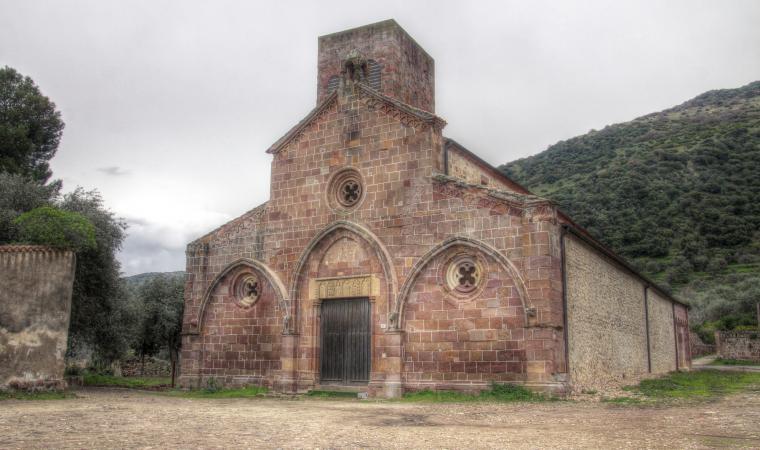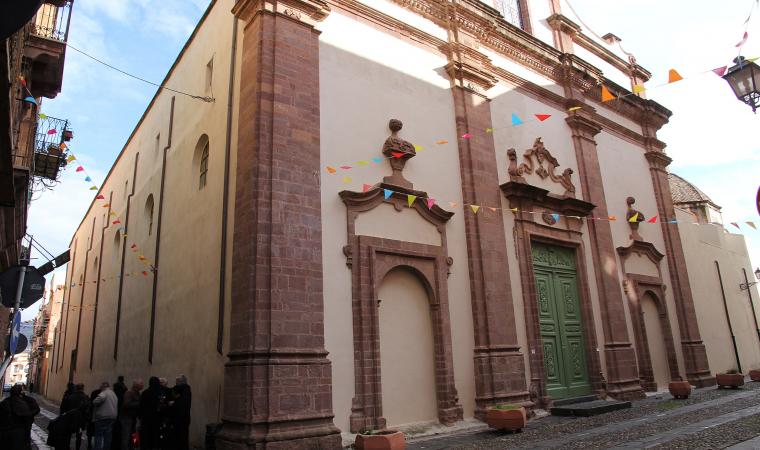It is defined a ‘church-museum’ because of its precious furnishings and, after suffering decades of neglect and oblivion, it then returned to its ancient splendour and is once again the home of the simulacrum of the patron saint of the town. The Parish Church of Sagama, dedicated to Saint Gabriel the Archangel, dates back to the early 17th century. However, in reality, it stands on the ruins of previous buildings, visible in the church hall. It was built by workers – perhaps picapedrers (stone cutters) – from Sassari, who, according to agreements, had to use the Church of San Giacomo di Sassari as a model. Many consider it one of the most beautiful churches in Planargia, also thanks to its position: from a raised churchyard-square, it dominates the green valley of Badde ‘e Sagama.
On the façade, made of tuff stone ashlars, you will notice a division into three orders, created by cornices. At the top, there is a curvilinear tympanum, with another triangular tympanum above the entrance portal. On the left, stands the bell tower, above which there is a small and unusual onion-shaped dome. Until the last century, it was surrounded by a fence, later demolished to build the present-day stretch of Corso Vittorio Emanuele III. The church hall has a single nave, with a barrel vault and eight chapels, four on each side. It contains a precious 14th-century wooden statue portraying the saint to whom it is dedicated. Among the other furnishings, you can admire various paintings created by the eighteenth-century school, including a Nativity scene and a Pietà, wooden altars and a pulpit from the same period as the church.
Until the first decades of the 20th century, the church and churchyard were the stage of a big religious festival, with stalls placed within the fenced area. The Church of San Gabriele was also a popular pilgrimage destination. After the war, a period of decline began: this was also due to the Municipality’s loss of autonomy - some years before, it had become a hamlet of Suni - and the church was badly neglected, while other rural sanctuaries fell into ruin and the simulacrum was transferred to Bosa. Sagama flourished once again towards the end of the 20th century, with the reconstruction and renovation of its churches and with the return of ‘its’ saint, whose simulacrum had been restored and preserved in a shrine. The festival, also deeply heartfelt by the inhabitants of the nearby villages, takes place on 24 March.
The surrounding area is rich in Nuragic heritage. To the north, stand four ‘sentinels’: the nuraghe and the protonuraghe Molineddu, the polygonal nuraghe Funtanedda and, very close to the parish church, the single-tower Muristene. In the countryside, you will also find remains of Giants’ Tombs and Domus de Janas.

